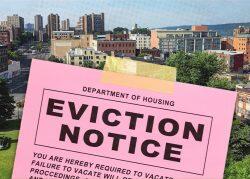The mass eviction event feared by many when the federal moratorium ended in August has not come to pass — not yet, at least.
Court eviction filings increased by 8.7 percent in the United States from August to September in more than 30 cities tracked by Princeton’s Eviction Lab. While that figure marks an increase, the Wall Street Journal reports the 36,796 filings were only about half of the month’s pre-pandemic average.
In the wake of the federal moratorium’s expiration, eviction rates varied across U.S. cities. Eviction rates in Richmond fell by 84% and in Philadelphia by 71%. The Journal reports Houston and Jacksonville, however, were among cities trending near historic highs for evictions.
Many states and cities across the country put their own moratoriums into place to outlast the federal one. Additionally, some local governments have enacted legislation to make it harder for landlords to file evictions.
Still, housing attorneys and advocates told the Journal how the low eviction rate across the country shows effects of federal rent aid and local tenant protections put into place before the national moratorium expired.
More help is on the way for renters and landlords alike, the report said. Doug Bibby of the National Multifamily Housing Council told the outlet only 20 percent of federal rental assistance has been approved or paid so far. The available rent aid paid totals $46.5 billion.
However, there’s still a possibility that more eviction filings could be on the way. The slow rollout of federal rental assistance could force landlords to the courts without aid in hand and courts are still working through a backlog of cases filed during the pandemic.
In New York, some landlords are seeking alternate ways to get timely judgments against nonpaying tenants, turning towards civil court to try for money judgments, rather than the repossession of a home.
Read more


[WSJ] — Holden Walter-Warner
